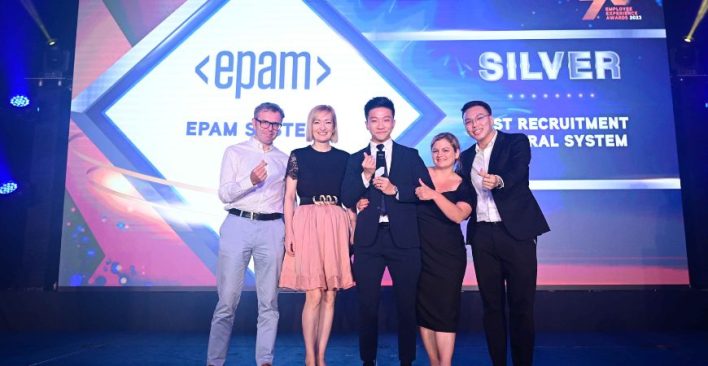How to Personalise your Communications to get the Attention of 90% of your Candidates

Do you know what pisses me off? When Talent Managers and recruiters refer to their candidates as candidates only… where has the personalisation gone?
 This reminds me of a Robin Williams movie called Patch Adams. Williams was a trainee doctor in the movie and on his first hospital round with his fellow co-workers, he asked the attending physician what one of the patient’s name was. He received puzzled looks all around and the supervisor had to refer to the patient chart for her name. That drove home the point that doctors needed to treat their patients like people, and not like a job.
This reminds me of a Robin Williams movie called Patch Adams. Williams was a trainee doctor in the movie and on his first hospital round with his fellow co-workers, he asked the attending physician what one of the patient’s name was. He received puzzled looks all around and the supervisor had to refer to the patient chart for her name. That drove home the point that doctors needed to treat their patients like people, and not like a job.
Coming back to recruitment, today’s Talent Managers and recruiters have access to heaps of potential candidates thanks to the popularity of websites such as LinkedIn, Facebook, Seek Talent Search and Indeed. This means candidates who are in demand are more than likely to be receiving numerous messages and solicitations from recruiters from across multiple channels. To make matters worse many recruiters are using generic, stereotypical lines recommended by LinkedIn, Seek and Indeed. You would think it makes the job easier but, on the contrary, it makes it harder.
Put yourself in the shoes of these candidates – when an avalanche of messages all sounding the same are coming through to your mailbox all the time, would you pay attention to any of them? At best, this represents a simple opportunity missed for the recruiter to create a meaningful relationship with the candidate, or, at worse, this could negatively impact the recruiter and the hiring company’s brand.
In order to avoid these potential issues and achieve cut through, the recruiter or Talent Manager needs to put in effort to ensure a certain level of personalisation when reaching out to their candidates. It’s time for your candidates to be treated like people, and not like a job.
Here are five proven ways I personalise my communication to candidates:
 Connecting the dots for them
Connecting the dots for them
Look at the Position Description to identify mandatory and preferred requirements, then matching them to the candidate’s list of experience.
Thereafter, put this into the context of “Benefit to Need”. In other words, I help the candidate connect the dots between how the opportunity would be beneficial to him or her, while at the same time, making sure that my client’s needs are fulfilled.
For example:
Hi John, I am a recruitment consultant specialising in the renewable energy space. I have an opportunity for a consultant with 2-3 years support experience in the retail space to learn comprehensive commercial renewable solutions and grow his or her skills. Who do you know that loves learning and growing their career and income?
 Identify things we have in common
Identify things we have in common
Establish a common ground by determining what we share in common, such as professional connections, experiences and industry interests. These are good ways to help you start a relationship.
For example:
Hi Jane, I have been working in the renewable energy industry for five years and we have 20 shared connections and many similar interests. I would dearly like to be able to connect to you and learn from your experience and understand your future direction.
 Using referrals
Using referrals
It has the highest rate of hiring success and is still one of the best ways to approach a candidate for the first time. However, you do need to spend some time and effort finding credible referees but the potential end result can be totally worth it.
 For example:
For example:
Dear John, Jane Smith has referred me to you. I am an executive recruitment consultant who has recruited 30 specialists from the renewable energy industry in the last 12 months and I would love five minutes of your time to discuss your industry. Would you be able to speak with me?
 Using Crystal Knows
Using Crystal Knows
This technology has been around for 12 months and it works quite well. I must admit I was apprehensive trying it for the first few times as it relies on analysing relationship, statistics and psychological models to give you a personality profile – it all sounded like quackery to me. However, I was pleasantly surprise with the accuracy of the results and I have used this tool many times since.
During one memorable pitch, I used the information provided by Crystal Knows as a guide when communicating with a CEO. He was impressed and asked how I knew about his preferred communication style. The CEO ended up considering my proposal.
This is what I said to him:
Dear John, I have researched you carefully and I understand you appreciate people who communicate directly and come to the point.
 Reciprocity or the art of flattery
Reciprocity or the art of flattery
Using flattery when you do not have any relationship requires subtlety, or you can come across as fake and insincere. I will only use this tactic if I have exhausted all the above options.
For example:
Dear Jane, as I read your profile, I was most impressed with the depth of your experience. In my six years of recruiting in the renewable energy space, I seldom come across a candidate with similar levels of knowledge & skills as you do and I am wondering if I could take 10 minutes of your time to get to understand your future direction?
OR
Dear Jane, I note you have a recommendation from John Smith, a person who I consider to be an iconic figure in your industry. I was also most impressed with the depth of your experience. In my six years of recruiting in the renewable energy space, I seldom see a person so highly recommended in their industry. I am wondering if I could take 10 minutes of your time to get to understand your future direction?
Summary
I hope you have found these personalisation tactics interesting and useful. If you are looking for more information, check out Dr. Robert Cialdini’s 6 Weapons of Influence. I’m a student of his teachings and the principles of using social proof, reciprocity, commitment & consistency, etc. have been very useful in guiding me during the course of my recruitment work.
Good luck with your candidate engagement and getting your candidate to move in your direction!
Image: Shutterstock
If engaging and hiring diverse talent is important to you, check out our upcoming Sourcing Social Talent conference:

Related articles
Leave a Reply
Sign up to our newsletter
Get a weekly digest on the latest in Talent Acquisition.
Deliver this goodness to my inbox!


